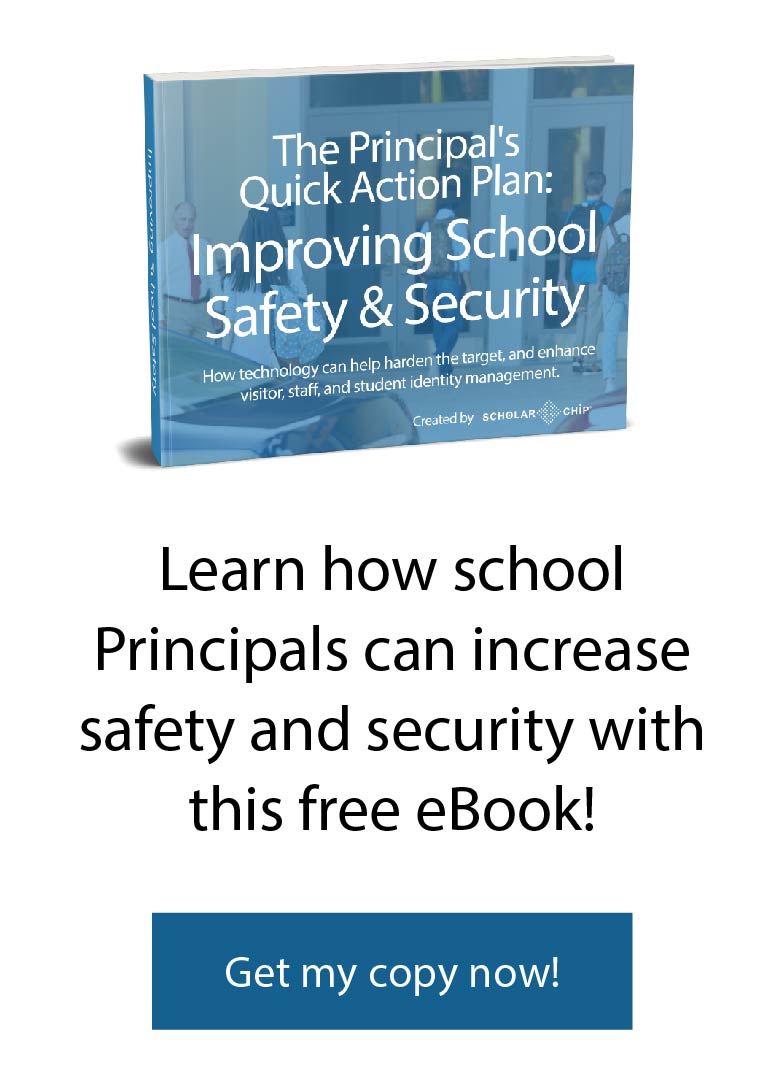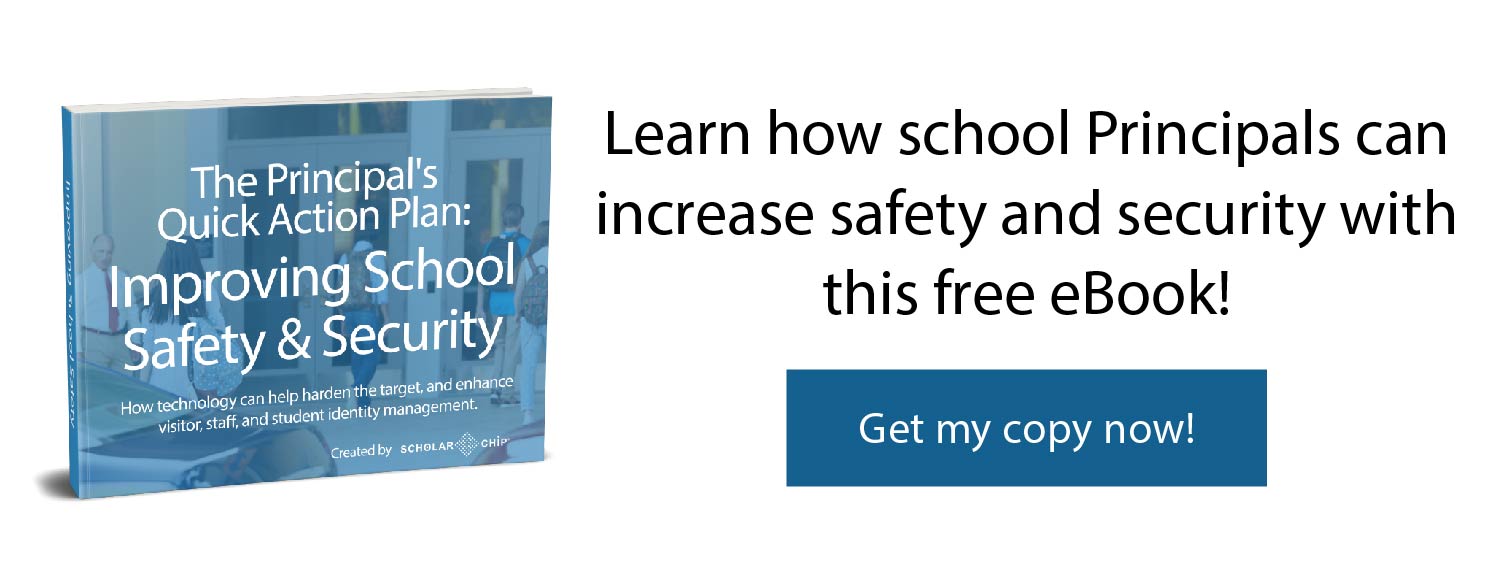School safety is a topic much discussed in school systems around the country. For school leaders, the pressures are intense to provide a safe school environment where students can thrive and learn while remaining protected.
School officials are being asked to provide robust school security measures that could face scrutiny from local elected officials, parents, the public at large (especially taxpayers), and students themselves. Often the expectations to provide modern, broad-based solutions to school safety come without the financial support or capabilities to finance those initiatives.
Many school districts are also saddled with older legacy technologies – if they have any at all – to monitor and track students and visitors. Data that is nonexistent or siloed, makes it difficult for administrators to spot trends and use that information to drive decision-making toward possible threats.
Why a Comprehensive Solution Makes Sense
The issues related to school safety are complex. That’s why school security measures that address school safety need to cover a broad array of components. A comprehensive approach allows school systems to address school safety and related issues in an integrated platform. Data-driven decisions, real-time responses and user-friendly engagements are outcomes that should be paramount in the selection of a security solution.
Recently, national organizations of school counselors, psychologists, resource officers, and principals published A Framework for Safe and Successful Schools. The report focuses largely on the importance of counseling, staffing, discipline, and crisis planning. It also notes that technology solutions need to “balance physical and psychological safety to avoid overly restrictive measures (e.g., armed guards and metal detectors) that can undermine the learning environment.”
Similarly, a RAND Corporation report notes that school safety technologies can address the pressing need for all-in-one applications that would integrate currently fragmented and outdated school policies, procedures, and training.”
Developing a School Safety & Operation System
For school systems looking for a comprehensive approach to school security measures, the solution is a School Safety & Operation System (SSOS). Such systems address multiple challenges schools & districts face.
First, many school districts deploy a Student Information System (SIS) to track various components of school life – scheduling, grading and demographics. Yet the typical SIS does not incorporate many other important factors directly related to school safety.
Second, with static or declining budgetary support, a SSOS can provide a technology solution that allows districts to improve safety proactively while providing the appropriate learning environment.
All too often, school systems have purchased the component parts of a SSOS separately. Such an approach is likely to create great inefficiencies and financial strain. Buying the applications separately creates major issues, including:
- Lack of integration. With data stored in multiple locations, connecting information and systems is problematic, resulting in costly work-arounds and coding, if any.
- Higher cost. Independent systems will individually be more expensive than a single-source solution.
- More demands on resources. Maintaining, upgrading and managing multiple systems puts a strain on administrative, support, and technology staff.
- Opportunity loss. Without an integrated solution, school districts are losing an opportunity to leverage the insights that shared data can provide.
For school systems that develop a SSOS, the opportunities are abundant to provide safer schools, improve operational efficiencies, and reduce the time and expense of using, integrating and maintaining multiple systems.
What Components are in an SSOS?
An effective SSOS includes a broad array of components that directly and indirectly affect school safety. Here’s a look at the main components and why they have an impact on improved safety:
- Identity Management. Having a proper form of identification for students and staff will help provide better management while on campus. Faculty and students can be issued smart identification cards that are used to gain building access and provide better attendance monitoring. New technologies can enhance these cards, including embedded tokens to authenticate users and contactless smart cards. Other options could include Near Field Communication (NFC) phone features that use wireless technology to authenticate. No matter the tool, schools need to ensure that personal information is protected and cards cannot be faked.
- Visitor Management. Knowing who is visiting your campus and why is the first line of protection. Your SSOS should be able to track new visitor entries. A visitor management system will also screen visitors with the swipe of their driver’s license or identification card, connecting their information to a database of registered sex offenders to see if there is a match.
- Secure Door Monitoring. Managing access to doors can be automated with a Smart ID Card solution that allows schools to know which staff and students have entered which doors, let populations have access at certain times of day, and lock down immediately.
- Mobile Monitoring. Mobile monitoring and features can be an additional part of the process if the technology provides it. Staff would be able to use tablets and other mobile devices to take attendance, identify students and collect data-driven reports.
- Student Accountability. With automated attendance collection tools, administrators can track attendance quickly and teachers can regain valuable minutes they would typically lose every day. These applications help younger students learn to use their identification and become more responsible with information. ScholarChip offers a Student Attendance Location App (SALA) that helps administrators monitor a student’s whereabouts when they are not in their scheduled class. For example, the nurse’s office or guidance.
- Student Behavior. Studies show that a focus on mental health can reduce possible incidents of school violence or threats. ScholarChip provides a behavior intervention solution called ABE (Alternative Behavior Educator), which automates and tracks referrals for students who are disruptive. Real-time referrals lead to assigned videos or tutorials for students, monitoring, and district-wide data gathering. These tools provide at-risk students with skills necessary for success and help teachers with powerful data-driven reports throughout a student’s journey.
The ScholarChip Solution
ScholarChip is an all-in-one, platform solution to help reduce school threats and address the important issues surrounding school safety. Data from students, faculty, and stakeholders are leveraged to manage school access, attendance, and behavior management through the platform tools to increase safety and promote the campus climate schools are looking for. ScholarChip solutions address the full scope of school safety needs.
To learn more about school security solutions and how to reduce possible threats, request a 1-on-1 tour with ScholarChip today and stay ahead of the curve.


